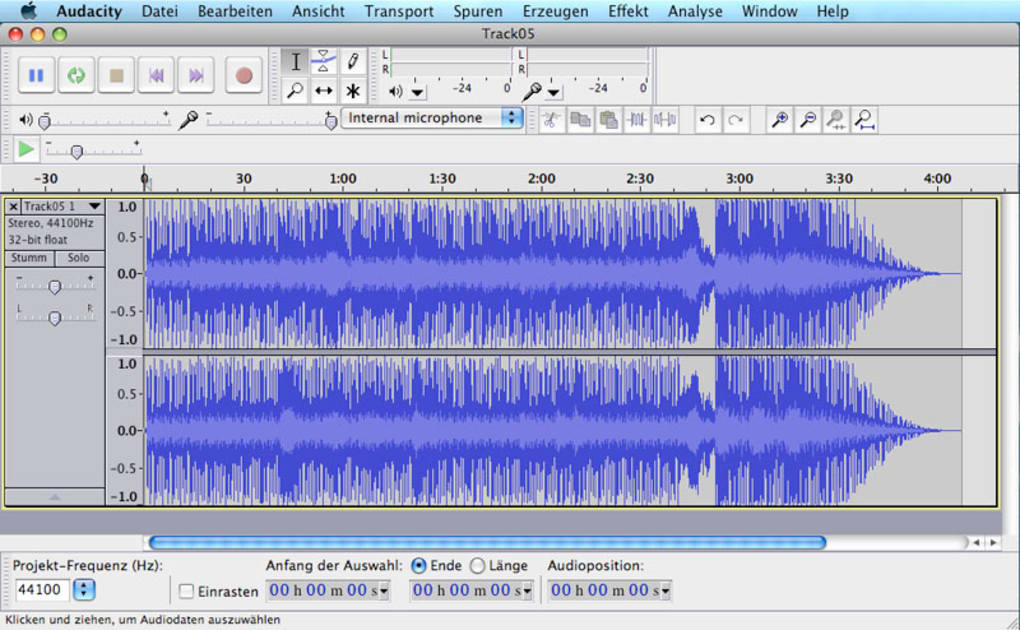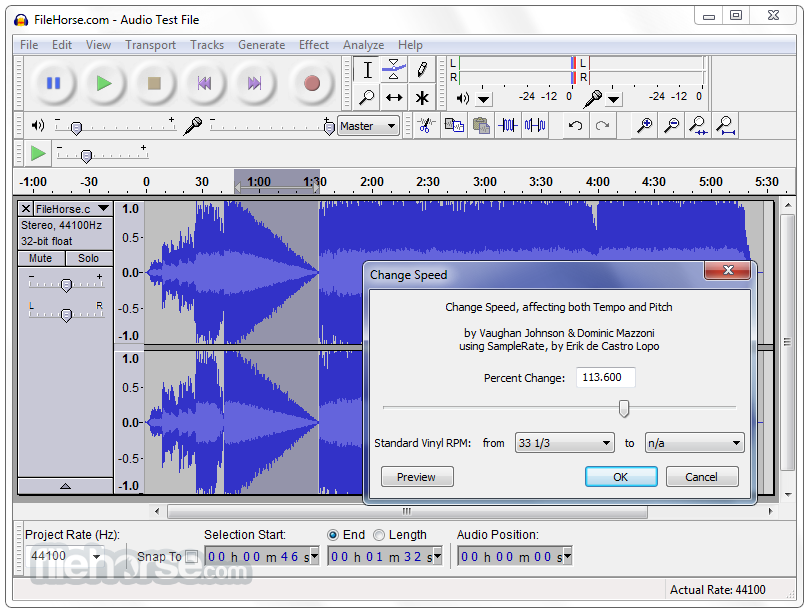
- 2017 DOWNLOAD AUDACITY FOR MAC HOW TO
- 2017 DOWNLOAD AUDACITY FOR MAC FOR MAC
- 2017 DOWNLOAD AUDACITY FOR MAC INSTALL
- 2017 DOWNLOAD AUDACITY FOR MAC UPDATE
The appcan record and play sounds and import and export WAV, AIFF, MP3, and OGG files.
2017 DOWNLOAD AUDACITY FOR MAC FOR MAC
Please check out my extensive Mac help area and command line tutorials too.Audacity for Mac is an open source, cross-platform audio editor and recorder.

Pro Tip: I’ve been writing about MacOS X and the command line for quite a while. Got it? And that’s how you get Audacity to work in Catalina until it’s all fixed. Like it? You can make it a permanent alias for subsequent invocations of Terminal by putting that exact “alias” line into a simple text-only file called “.profile” that would live in your home directory.
2017 DOWNLOAD AUDACITY FOR MAC HOW TO
Then the last line shows how to use it just type in the word and boom! you’re good to go: alias audacity=/Applications/Audacity.app/Contents/MacOS/Audacity This establishes a command alias called, ingeniously enough, “ audacity“. The first invocation is just to confirm that it works properly (basically what we did earlier), then notice the “alias audacity=” prefix to that complex command. A bit tedious but here’s one thing you can do: create what’s known as a command alias in Terminal and next time you can just type ‘audacity’ and have it work right. This means that until the Audacity development team does fix it, you’ll be launching it from the command line every time you want to use the program. So you haven’t “fixed” the problem with this command line invocation, you’ve just figured out an effective workaround. Quit the program, launch it again with a double click on the app icon, however, and you’re back to square one. Got it? Audacity will launch, but this time it’ll prompt you for permission to access the mic:Īllow access with the “OK” button and you’re back in business! Audacity will then work just fine:

If you want to just copy and paste and have Audacity installed in your regular Applications folder, it’s: open /Applications/Audacity.app/Contents/MacOS/Audacity Instead, use the second invocation, because you want to specifically target the Contents folder’s app. That works and launches Audacity, but.nothing’ll be different and it still won’t work: Those of you who are familiar with the Mac command line interface will immediately launch it as shown in the first entry: “open -a Audacity”. It’s included with all releases of MacOS X, so you’ll have it tucked away in Applications > Utilities, or, as I said, just use Command+Space to get the Spotlight input box and enter “terminal” to launch it. I know, so 90’s, eh? To do this, simply launch Terminal.
2017 DOWNLOAD AUDACITY FOR MAC INSTALL
Until the app itself is fixed (I’m guessing it’ll be an install permissions change) the solution is to launch it from the command line instead. Easiest way is through Spotlight, btw.īut let’s start with Audacity recording, well, nothing:Įverything looks fine, and it even shows “MacBook Pro Microphone” in the input selection as if it’s all working just dandy. To start, though, you’ll want to know how to launch Terminal from Applications. Don’t worry, though, at the end of the article I’ll show you how to make that as easy as possible.

Which is a pretty big problem, as you might expect.įortunately there’s a pretty easy workaround to get Audacity back to full functionality in Catalina on your Mac system, though it requires you to put on your geeky command line beanie for just a minute or two. It doesn’t know that, however, so instead of popping up a warning or request for permission, it just gets zero signal and chugs along, thinking it’s recording just fine. The issue is that by default the application no longer has permission to access the audio input device (e.g., the microphone).
2017 DOWNLOAD AUDACITY FOR MAC UPDATE
Except every so often Apple comes out with an update to MacOS X that breaks the program and MacOS X 10.15 “Catalina” did just that.

It’s simple, designed to do one thing and do that well, and it’s open source so there’s no license fee, no hassles, no cost. Audacity is a great open source audio recording and editing program beloved by lots of podcasters and musicians alike.


 0 kommentar(er)
0 kommentar(er)
